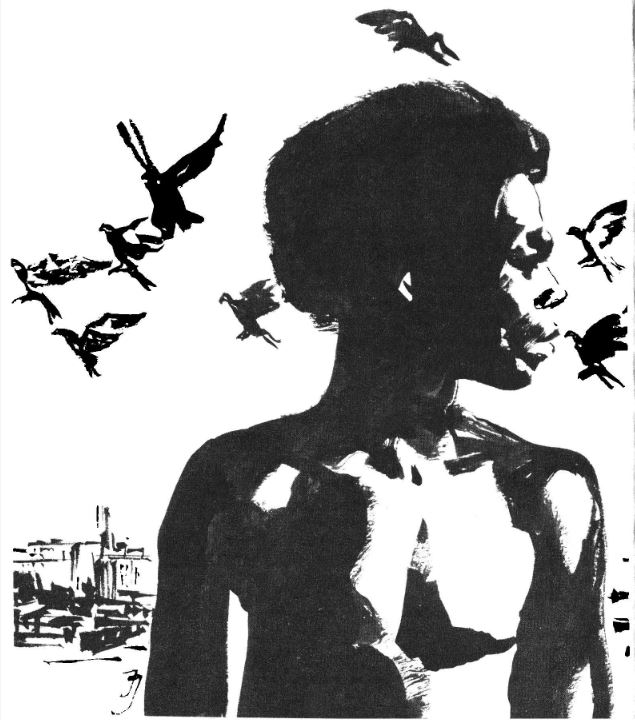Along with Octavia E. Butler (1947-2005), Samuel R. Delany (1942-), John M. Faucette (1943-2003), John A. Williams (1925-2015), and Steven Barnes (1952-), Jesse Miller (1945-) was one of a handful of African American science fiction authors active in the 1970s (note). I have confirmed with Jesse Miller’s relatives that he is still alive. I initially, before confirmation, extrapolated his birthday from a quote in his author blurb in Orbit 16, ed. Damon Knight (1975): “I am black. I am twenty-nine, and I have a good sweet woman, whose name is Jean, and I am slowly going blind.”
Soon after his honorable discharge from the United States Airforce at 21 (after service in Vietnam?), he published four short stories between 1972 and 1979 and then left science fiction altogether. One of a legion of authors first published by the late Ben Bova, he was a finalist for the John W. Campbell Award for Best New Writer (renamed the Astounding Award) for his first published science fiction story “Pigeon City” (1972). He lost to Spider Robinson and Lisa Tuttle. He wrote his first story (published later in 1975) while in a VA hospital bed. For a bit about his life, his brief experience at SF conferences, reflections on losing the Campbell Award, and various humorous and serious interactions with other authors (he smoked a pernicious strain of weed with Joe Haldeman), check out his article “Obnoxia” (c. 2001). I’ve also included George R. R. Martin’s recollections, as recorded in his intro to “Twilight Lives” (1979), in the review of the story below.
Theodore Sturgeon penned the following about Miller in his intro to New Voices II, ed. George R. R. Martin (1979): “[Miller] has that rather rare gift of writing “there,” of giving the reader the feeling that the writer is on location and not operating on a built-up set. Jesse Miller will go flap-jappering up to a high place or he will disappear.” It’s a loss to the field that the latter happened. Three of the four short stories are worth the read! And “Pigeon City” is a near masterpiece that should be anthologized more widely.
If you happen to know any more about him, please let me know!
Note: I think this is complete but I could be missing someone. Steven Barnes published his first three short stories in the 70s. I know Charles R. Saunders’ early work appeared in 70s genre fanzines. Did he write any SF or was it all sword and sorcery? I considered leaving John A. Williams off this list as he’s known as a mainstream author. His wonderful novel Captain Blackman (1972) could be classified as a speculative fiction involving time-travel (whether or not its entirely metaphorical). Williams’ Sons of Darkness, Sons of Light (1969), which I purchased recently, tells of near-future race violence in New York City. I think he qualifies.

Jack Gaughan’s interior art for Jesse Miller’s “Pigeon City” in Analog Science Fiction (November 1972)
“Pigeon City” (1972), 4.5/5 (Very Good): First appeared in Analog Science Fiction (November 1972), ed. Ben Bova. You can read it online here.
In the 1950s and 1960s, white Americans propelled by racism and economic reasons fled the urban centers for the suburbs. According to Leah Boustan, for every “black arrival, two whites left the central city” in Northern and Western metropolitan areas. An insidious cultural iconography of middle-class white suburbia, replete with lawn and single-family houses, perpetuated inequality and excluded others from the American Dream. In this period, major race riots broke out across the United States–New York City (Harlem Riots, 1964), Los Angeles (Watts Riot, 1965), Newark (1967), and Detroit (1967)–in protest of poverty, racism, and unemployment exacerbated by the departure of businesses from the city centers.
Continue reading